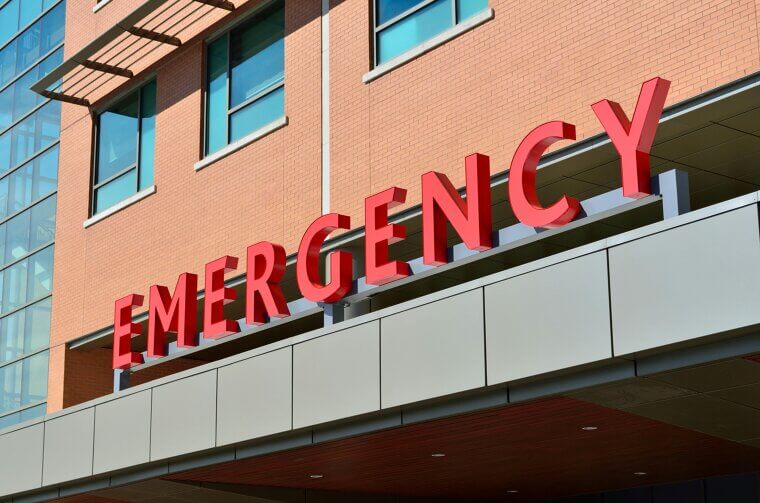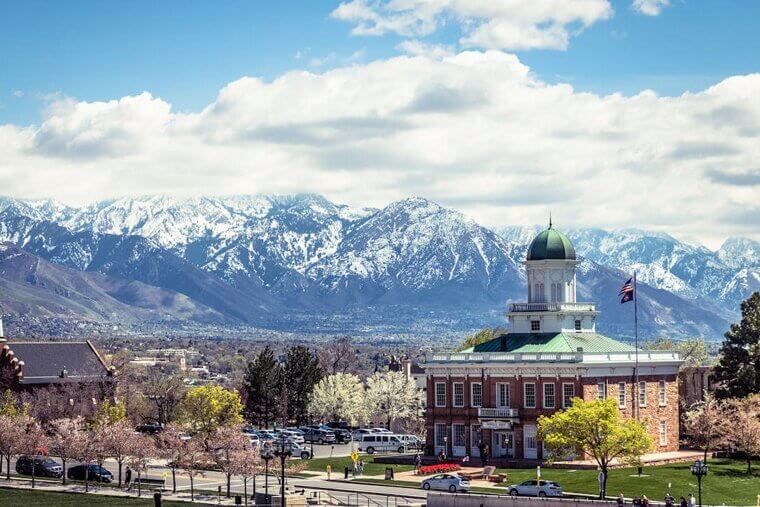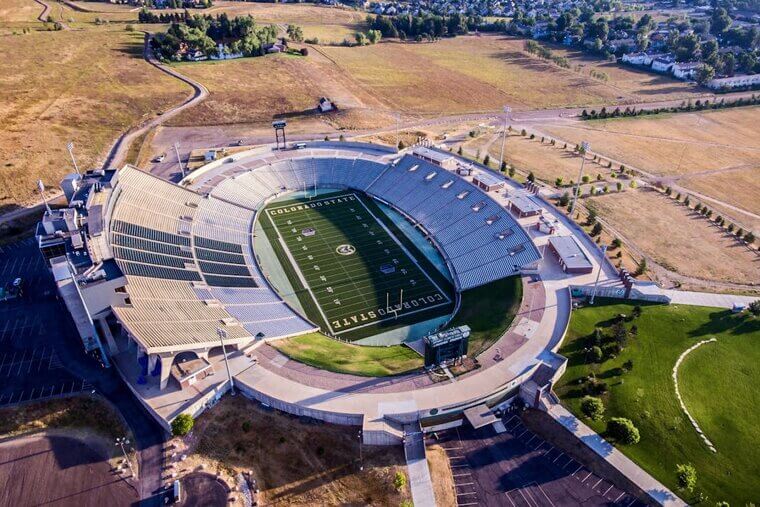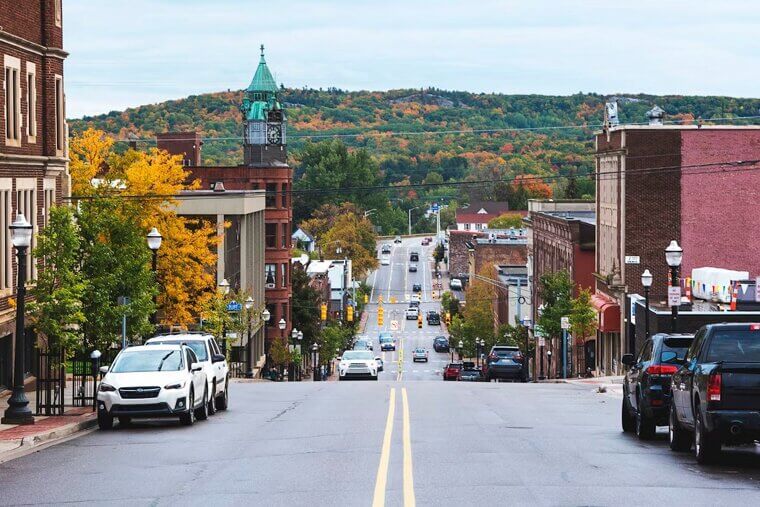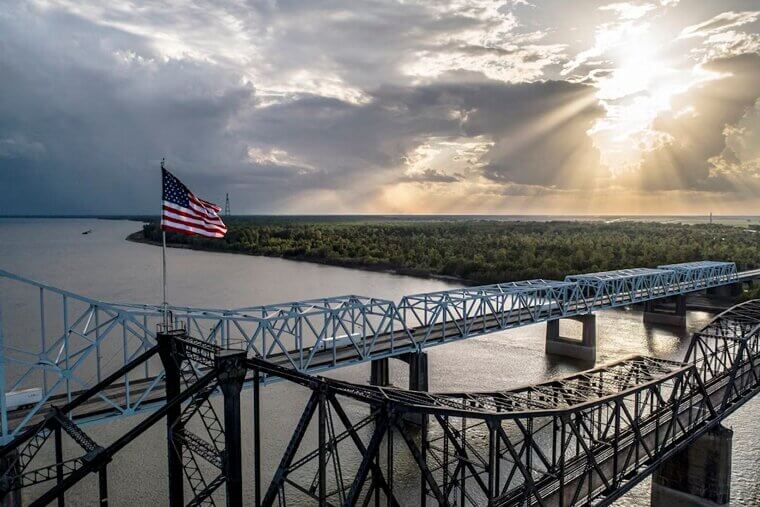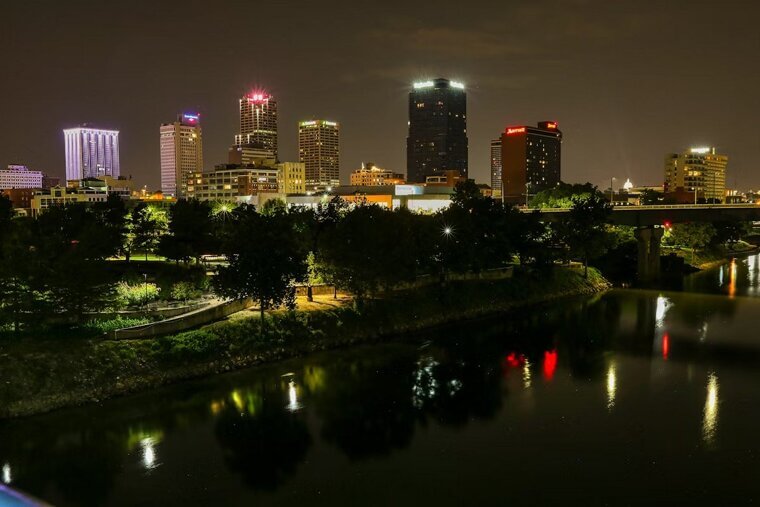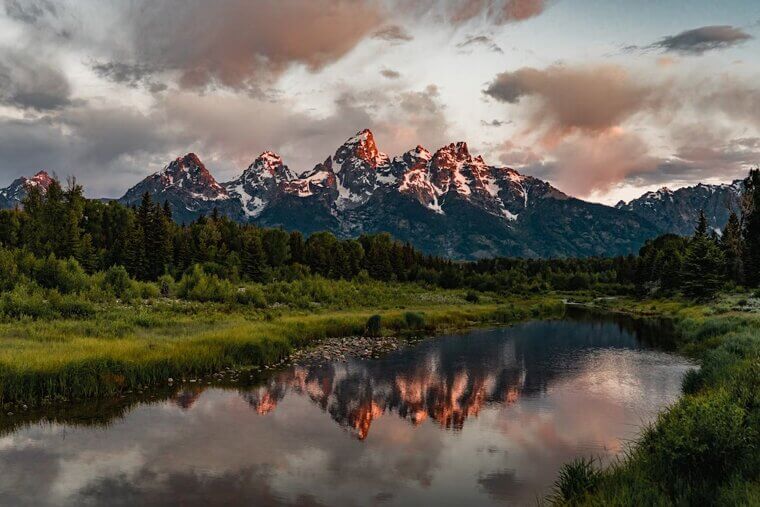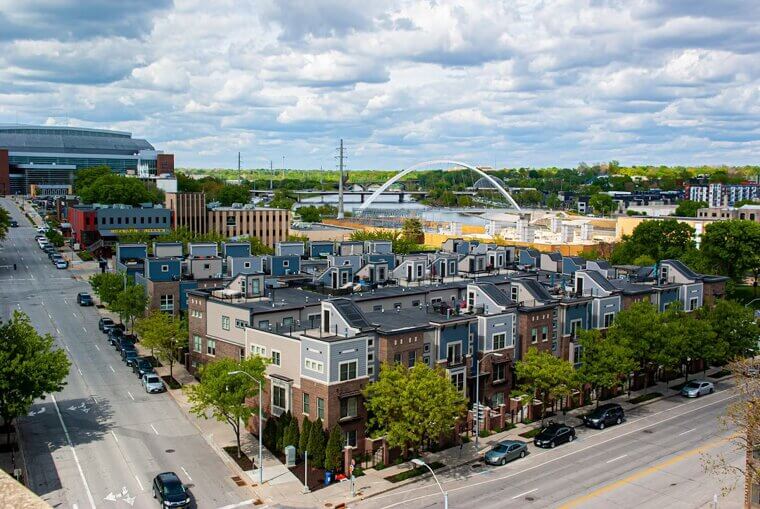Best and Worst States For Hospitals
When it comes to your health, where you live really does matter. Some states are packed with top-rated hospitals offering cutting-edge care and short wait times, while others… well, let’s just say you might want to avoid going to the ER. We took the data from World Population Review and got you a list of best to worst states for hospitals.
New Jersey
New Jersey may be the butt of jokes in New York, but it takes the crown for hospital quality. The state has seriously improved patient outcomes, safety, and satisfaction. In 2023 it had 51.5% of hospitals with an A grade and 9 of the nation’s best hospitals. Not bad at all!
Idaho
Idaho might fly under the radar as a good state to live in, but its hospitals are considered top-notch. You’ll find clean facilities, caring staff, and low infection rates. People get in, get treated, and get back home without any drama. 50% of its hospitals have an A grade!
Utah
Utah’s healthcare system is considered super efficient, and the hospitals are top-notch. Big names like Intermountain and University of Utah Health offer the best care, but even the smaller hospitals are places you want to be when you get sick.
Pennsylvania
The TV show “The Pitt” offered viewers a look at what healthcare in Pennsylvania was like, and it really is like that. Doctors go out of their way to help patients and save their lives. You don’t have to live near Philly or Pittsburgh to get excellent treatment here, and it has 24 of the nation’ best hospitals.
Connecticut
Connecticut keeps citizens happy with hospitals that are both high-tech and down-to-earth. Places like Yale New Haven provide good outcomes for patients. It has five of the best hospitals in the United States, so it’s definitely a good state to be in if healthcare is a priority.
North Carolina
North Carolina’s hospital game is strong, especially with places like Duke and UNC. You’ve got high-tech care, smart doctors, and a growing focus on rural health access now. 42% of North Carolina hospitals have an A grade, meaning people who go there can expect good outcomes.
South Carolina
South Carolina’s hospitals have been stepping it up recently. MUSC and Prisma Health are considered the best ones, but overall, the state’s really made strides when it comes to safety and shorter wait times. The systems for heart care are considered especially good.
Colorado
Colorado loves wellness, and the state’s hospitals reflect that. From Denver to the smaller ski towns, facilities tend to be modern and well-run, just what you need. Add in great trauma care and good rural access, and it’s easy to see why the state scores so high.
Virginia
Virginia has been killing it with hospital care recently. Big players like UVA Health are doing great things, but even local hospitals tend to run a tight ship. If you land in a Virginia ER, odds are good you’ll be seen quickly and treated well.
Massachusetts
Massachusetts has some of the best hospitals in the country, and 36.8% of them have an A grade. Boston alone has Mass General and Brigham and Women’s. But the high quality doesn’t stop there. Across the state, you’ll find top care and smart, well-trained doctors.
Florida
Florida’s hospitals have come a long way, especially in places with big retiree populations. They now have good facilities, excellent heart care, and staff that’s used to dealing with older adults. Bigger systems like AdventHealth and Baptist Health are everywhere, so chances are you won’t have to drive far to find quality care.
California
California’s got some of the most advanced hospitals in the country - UCLA, Stanford, Cedars-Sinai - you name it. But even outside the big cities, you’ll find strong healthcare systems. It has a whopping 46 of the nation’s best hospitals, and 33.8% of its healthcare centers have an A rating.
Rhode Island
Rhode Island may be small, but it’s doing big things in healthcare. Hospitals like Lifespan and Care New England offer reliable care, and 33.3% of the hospitals in the state have an A rating. The state scores well on patient satisfaction, and people actually feel heard. It’s a good example of quality over quantity.
Texas
Texans aren’t shy about demanding quality healthcare, and they’re getting it. In the cities they have big names like Houston Methodist and Baylor, but even smaller towns tend to have decent facilities. The state is spread out, sure, but telehealth and outreach programs are helping close the distance.
Tennessee
Tennessee hospitals are especially strong when it comes to heart care and strokes. Vanderbilt is the big name in the state, but regional hospitals are considered good as well. It’s one of those states where you don’t have to be in a major city to get quick treatment, so it’s no wonder people are moving there.
Minnesota
Mayo Clinic puts Minnesota on the map, but the rest of the state holds up well too. Hospitals are clean, efficient, and known for good patient outcomes. It has seven of the nation’s best hospitals, and 31.1% of its facilities have an A grade rating.
New Hampshire
New Hampshire keeps things low-key but high-quality. Hospitals here are well-organized, patient-focused, and pretty quick to adopt new technology. It’s the kind of state where you might not notice how good the care is, because it all just works like it should.
Missouri
Missouri is climbing the ranks of best states thanks to better safety scores and more focus on patient care. Big systems like Barnes-Jewish are helping lead the charge, and it has three of the nation’s best hospitals. It’s not perfect everywhere, but access to decent care is getting easier, even in less populated areas.
Washington
Washington hospitals score well for both tech advances and overall quality. Big cities like Seattle have fantastic facilities, but smaller communities are also doing well. People here expect a certain level of service, and generally they get it.
Kansas
The state of Kansas might not be flashy, but it gets the job done. Hospitals here are known for keeping infection rates low and treating patients like people, not numbers. 30.3% of its hospitals have an A grade rating, and it has an impressive five of the nation’s best hospitals.
Montana
Montana’s hospitals may not be huge, but they’re surprisingly well-run. Places like Billings Clinic and St. Patrick provide good care, even across long distances. For a rural state, Montana does a good job making sure people don’t have to travel forever just to see a specialist or get a procedure.
Louisiana
Louisiana’s made real progress in hospital care. There’s a strong focus now on emergency services, chronic care, and community health. It's not perfect, but it's definitely moving in the right direction, and 27.9% of its hospitals have an A grade.
South Dakota
For a smaller state, South Dakota’s doing a good job when it comes to healthcare. Sanford Health and Avera are the big players, and they’re doing a solid job covering both city and rural areas. Patient scores are on the rise, and 27.3% of the hospitals in the state have an A grade.
Michigan
Michigan has some standout hospitals – it has seven of the top ones in the nation in fact - but the quality can vary depending on where you live. Still, most patients report good communication and thoughtful care. The state's even working to even things out so great healthcare isn’t limited to the bigger cities.
Mississippi
Mississippi’s been in the middle of the road for a while, but there are some bright spots. Hospitals are focusing more on improving maternal care especially, and places like UMMC in Jackson are leading the charge. Rural access is still a hurdle, but it’s slowly getting better.
Indiana
Indiana hospitals are dependable, especially in urban areas. It has five of the best hospitals in the country, and 26.7% of hospitals in the state have an A grade rating. Some rural areas lag a bit, but overall, healthcare in the state is good.
Ohio
Ohio has several big-name hospitals, such as Cleveland Clinic, that set a high bar. But once you get outside the metro areas, care can be a bit hit or miss. That said, the state’s still doing better than many in terms of outcomes, especially in heart and cancer care.
Illinois
Illinois offers some top-notch care, particularly around Chicago, with systems like Northwestern and Rush considered the best of the best. The rest of the state is more of a mixed bag, but overall hospital quality is decent.
Wisconsin
Wisconsin hospitals are quietly solid. Systems like UW Health and Froedtert consistently score high, and indeed the state has 6 of the nation’s best hospitals. Rural care is more difficult, but most residents are within reach of treatment without too much hassle.
Hawaii
Hawaii’s geography makes hospital access a little tricky at times, but the care itself is good. Honolulu has the best-equipped facilities, and the outer islands are catching up with better telemedicine. It’s not perfect, but it’s not bad either.
Georgia
Georgia’s got a few excellent hospital systems - Emory and Piedmont mainly - but the quality can swing depending on where you live. Urban centers do well, but rural hospitals have been struggling. Still, the state’s making strides in telehealth, so things are trending in a better direction.
Oregon
Oregon hospitals generally do a good job, especially in cities like Portland and Eugene. Facilities are clean, staff are responsive, and the state invests in preventative care. But it’s not all roses - some rural hospitals face staffing shortages. That said, patients usually walk away feeling well cared for.
Maine
Maine keeps things simple. It’s not overflowing with huge hospitals, but the ones they have are reliable, and 25.3% of them are considered to have an A rating. You’re also more likely to get a personal touch in Maine, especially if you're in one of the smaller towns.
Arkansas
Arkansas is working hard to improve its healthcare scene. Larger facilities like UAMS are doing well, but rural hospitals are hit or miss. That said, the state’s putting effort into making care more accessible and reducing wait times. There’s progress, it’s just a bit slow.
Maryland
Maryland’s ranking might surprise you, given Johns Hopkins is here - but it’s a bit of a mixed bag. That world-class care in Baltimore doesn’t always carry over to the rest of the state. Still, it has five hospitals considered among the nation’s best, and 22% of the state’s hospitals have an A grade.
Oklahoma
Oklahoma hospitals tend to rank lower for safety and patient outcomes, but there are still some standout ones in Tulsa and OKC. The challenge has been staffing and infrastructure, especially in rural areas.
Alaska
Alaska faces unique challenges… remote areas and very harsh weather for a start. But larger hubs like Anchorage offer decent care, and the state leans hard into telemedicine to reach the more far-flung communities. It's not the easiest place to get treatment, but they’re doing the best they can with what they’ve got.
Nevada
Nevada hospitals don’t score great across the board. Las Vegas and Reno have some good facilities, but long wait times and high readmission rates remain a problem. The state is trying to recruit more healthcare workers, which could help balance things out. For now, it’s hit or miss depending on where you go.
Vermont
Vermont hospitals are small but generally do well with the resources they have. There’s a strong sense of community care here. However, limited access to specialists and long travel times can be frustrating for some, though the government is working to fix things.
Alabama
Alabama has a bad reputation when it comes to healthcare and unfortunately it’s deserved. The hospital system struggles in a lot of areas, especially in rural parts of the state. There are some good urban hospitals, but overall access and quality needs a lot of work.
New York
You’d think New York would rank higher with giants like Mount Sinai and NYU Langone, but the state actually struggles with hospitals more than most people realize. It may have 12 of the nation’s best hospitals, but they’re not all highly rated.
Wyoming
Wyoming has a lot of open space… and not a lot of hospitals. Rural care is tough here, and many residents have to travel far away to get what they need. That said, the facilities that are around tend to be clean and efficient, just not equipped for more complex cases.
New Mexico
New Mexico has been trying to improve healthcare access, especially for rural and Indigenous communities, but the hospital infrastructure still needs work. Wait times and staffing shortages are common. The larger cities like Albuquerque are better off, but many smaller communities are left patching things together.
Arizona
Arizona’s hospital system is a bit uneven to say the least. Phoenix and Tucson have some excellent medical centers, but more remote areas struggle a lot. The state’s growing fast, and healthcare is scrambling to keep up, especially when it comes to senior citizens.
Nebraska
Nebraska hospitals do okay in urban areas like Omaha, but rural parts of the state have seen closures and cutbacks that have badly affected people. The state ranks low on patient satisfaction and access to certain important services. There’s a real need for investment in the state’s healthcare system, but it’s just not coming.
Kentucky
Kentucky faces big challenges to say the least when it comes to hospital quality. There are a few good hospitals in the state – three to be exact - but many facilities deal with limited funding and overworked staff. Rural hospitals are especially at risk. The state’s been working to expand Medicaid and reduce deaths, but there’s still a long road ahead.
Iowa
Iowa once had a stronger healthcare reputation, but hospital rankings have taken a dip in recent years. Staffing shortages and rural hospital closures are part of the issue. There are still solid hospitals in Des Moines and Iowa City, but the farther out you go, the worse things get.
West Virginia
West Virginia’s hospitals are fighting an uphill battle right now. The state’s health challenges - like high rates of chronic illness - put a strain on facilities that already struggle with funding and access. There are some good hospitals, but overall people aren’t having a good time with healthcare in West Virginia.
Delaware
Delaware’s hospital system doesn’t quite measure up, alas. There are a few decent facilities, but the state ranks low for patient outcomes and emergency care. Residents often head to neighboring states for specialized treatment, which says a lot.
North Dakota
Dead last on the list is North Dakota. The state’s rural nature makes access to care difficult, and hospitals face huge staffing challenges. Patients often have to travel long distances for anything beyond basic care. There’s work being done to improve things, but it’s an uphill climb.

